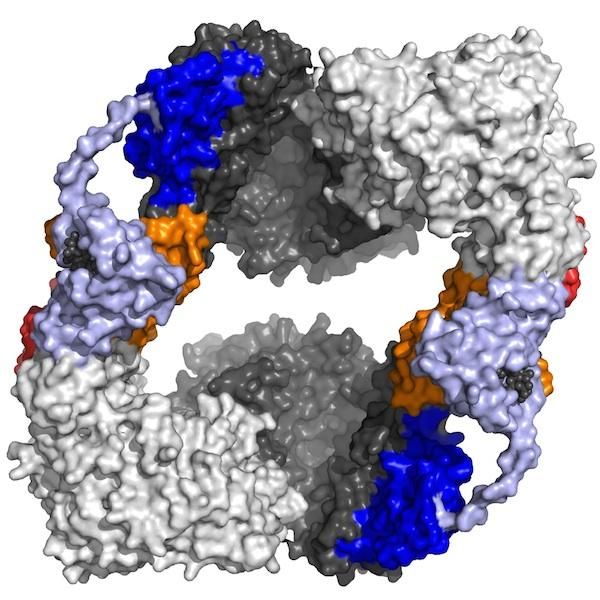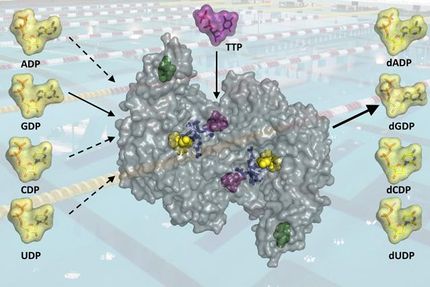New knowledge about the building blocks of life
A study of an enzyme that helps build and repair DNA in living organisms increases our understanding of how these processes are controlled and how we can use this to combat infections.

The three-dimensional structure of the RNR enzyme from the bacterium pseudomonas aeruginosa shows how it shuts down when there is no longer a need for DNA building blocks.
Illustration: Derek Logan
Chemists at the Faculty of Science at Lund University in Sweden, together with their colleagues in Umeå and Stockholm, have studied the enzyme ribonucleotide reductase, (RNR). By using synchrotron radiation, including at MAX IV Laboratory in Lund, they are able to show the three-dimensional structure of the enzyme and the building blocks of DNA. They have thereby discovered how the building blocks bind to each other and how this is used to control the function of the enzyme.
The researchers believe that in the future, their results, which are currently at the level of basic research, can contribute to the development of new antibacterial drugs, including drugs that fight nosocomial infection, also known as hospital-acquired infection. The RNR enzyme that the researchers have studied derives from the bacterium pseudomonas aeruginosa, which is associated with nosocomial infections.
A challenge in the development of drugs against these pathogens is that their enzymes are often similar to ours. If you inhibit the foreign enzyme in order to kill the bacteria, there is always a risk that this will affect the person's own enzymes, which leads to side-effects or even toxicity.
"However, we have discovered that the binding of molecules differs greatly between the human enzyme and the bacteria's RNR enzyme, so the risk of side-effects is therefore considerably smaller", says Derek Logan, senior lecturer at the Faculty of Science in Lund.
In the study, the researchers also discovered that RNR from the type of bacteria that causes the sexually transmitted disease chlamydia has the same type of binding to the DNA building blocks. Therefore, Derek Logan does not rule out the possibility that, in the future, these new findings could lead to a new treatment of chlamydia. However, he predicts that applications in the form of development programs for new drugs are at least ten years into the future.
Original publication
Most read news
Original publication
Renzo Johansson, Venkateswara Rao Jonna, Rohit Kumar, Niloofar Nayeri, Daniel Lundin, Britt-Marie Sjöberg, Anders Hofer, Derek T. Logan; "Structural Mechanism of Allosteric Activity Regulation in a Ribonucleotide Reductase with Double ATP Cones"; Structure; 2016
Topics
Organizations
Other news from the department science

Get the life science industry in your inbox
By submitting this form you agree that LUMITOS AG will send you the newsletter(s) selected above by email. Your data will not be passed on to third parties. Your data will be stored and processed in accordance with our data protection regulations. LUMITOS may contact you by email for the purpose of advertising or market and opinion surveys. You can revoke your consent at any time without giving reasons to LUMITOS AG, Ernst-Augustin-Str. 2, 12489 Berlin, Germany or by e-mail at revoke@lumitos.com with effect for the future. In addition, each email contains a link to unsubscribe from the corresponding newsletter.






















































